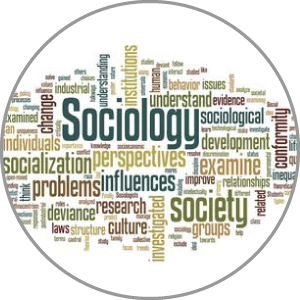SOCIOLOGY
![]()
A truly different approach to teaching family relations
 One of the topics covered in our sociology classes involved a discussion on the family unit and its role in society. The discussion was introduced by the theories of sociologists Talcott Parsons and Ann Oakley as well as people like Margaret Thatcher and Princess Diana.
One of the topics covered in our sociology classes involved a discussion on the family unit and its role in society. The discussion was introduced by the theories of sociologists Talcott Parsons and Ann Oakley as well as people like Margaret Thatcher and Princess Diana.
The discussion encouraged students to try and come up with their own definition of what constitutes a family based on their experiences and personal observations and with the use of some key terms for describing families like monogamy, marriage, children, support and love. Here are some of the definitions students came up with:
- A family is a unit made up of people held together by love and biology. (Darija Vuković, Year 12)
- A family is a unit made up of people who are related by blood and who are building a joint future. They live under the same roof and have different interests. They love and support each other. (Anita Spasojević, Year 12)
- A family is usually defined as a unit made up of people who are connected in some way. The connection can be a blood relation or based on interdependence in an economic, practical and emotional sense. Even though there are many different kinds of families and even though sociologists may not always agree on what constitutes a family, the fact remains that a family is a unit made up of people who have common interests. (Nikola Kuzmanović, Year 12)
After this, sociology teacher Željko Jovanović asked the students to think about the following question from the the perspective of our modern way of life: Is the nuclear family (consisting of a father, a mother and their children), the universal (dominant) family type in all societies, as claimed by George P. Murdock, or do our experiences tell us otherwise? After a brief discussion in which students expressed their agreement or disagreement with the given idea, they listened to an interview with four people from the UK whose concept of the family unit does not comply with the idea of a nuclear family because it is comprised of a single parent, the extended family and same-sex parents.
The discussion also covered families in other cultures that are outside of Europe. Students found out what the family unit means to the Ik tribe in Uganda, Afro-Caribbean families and in a kibbutz in Israel among other things.
After discussing the family unit, its different forms and features, students had to research and find interesting examples of families and family relations that differ from Murdock’s (and the Western) take on the nuclear family as the dominant and universal family type.


















